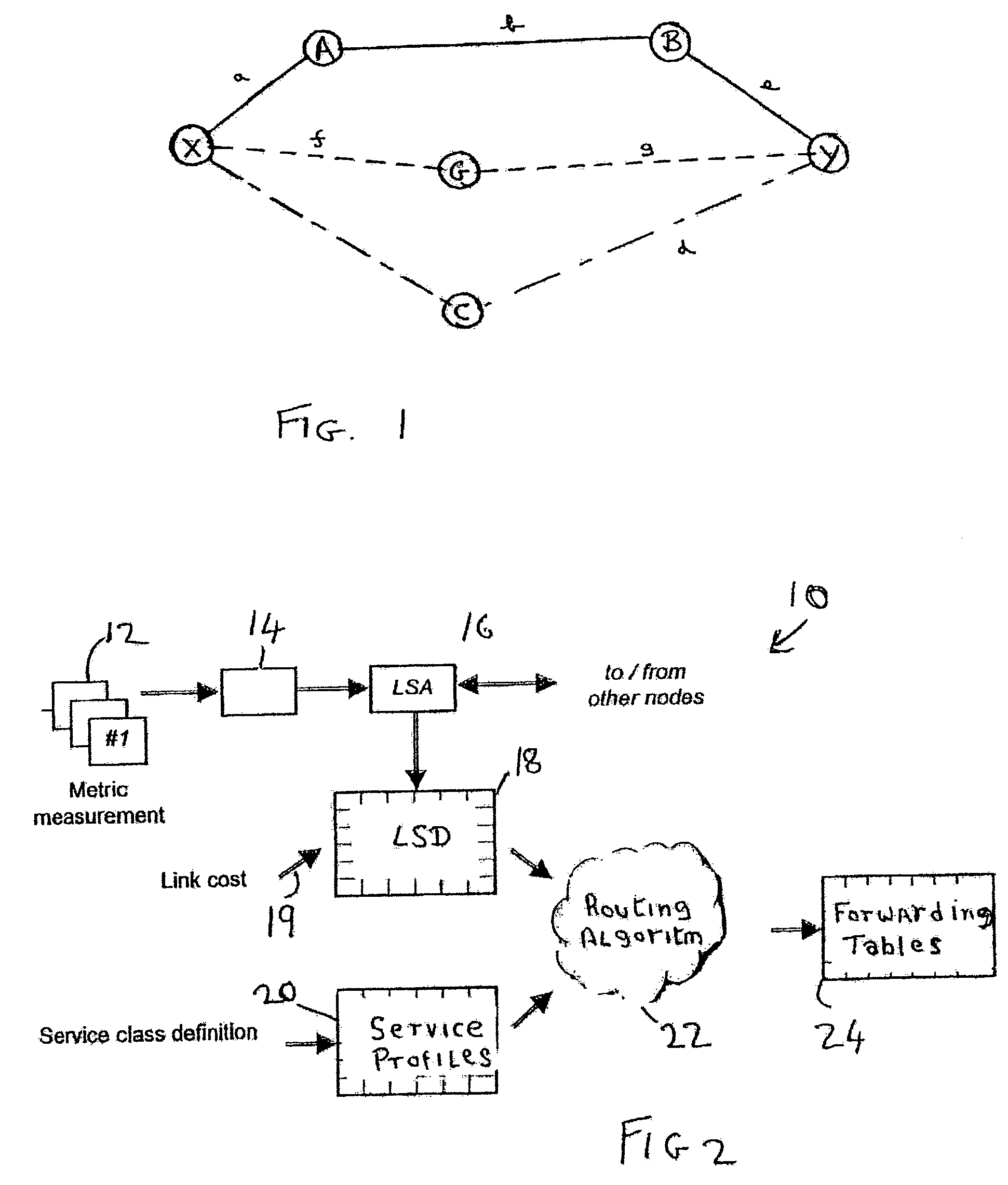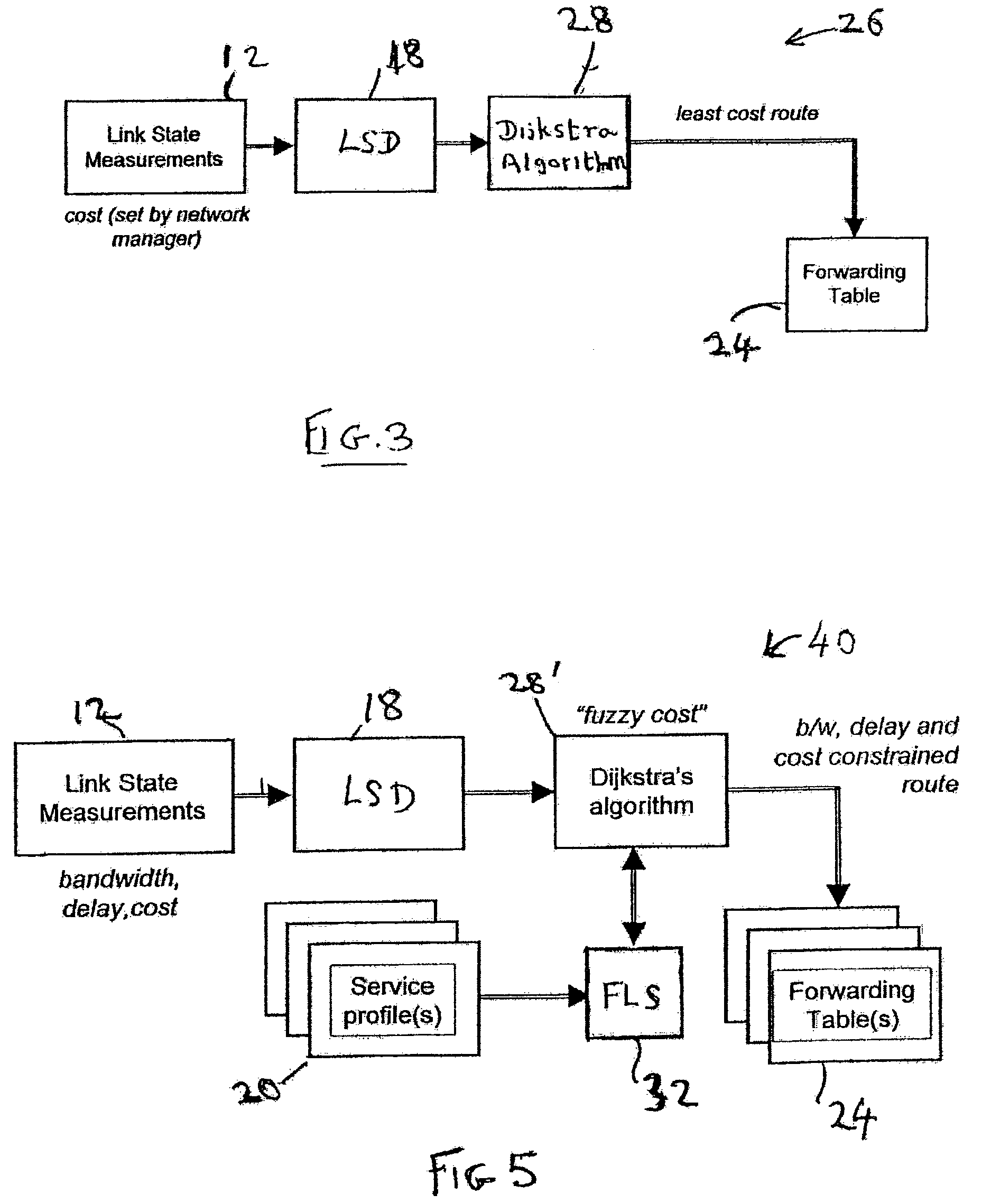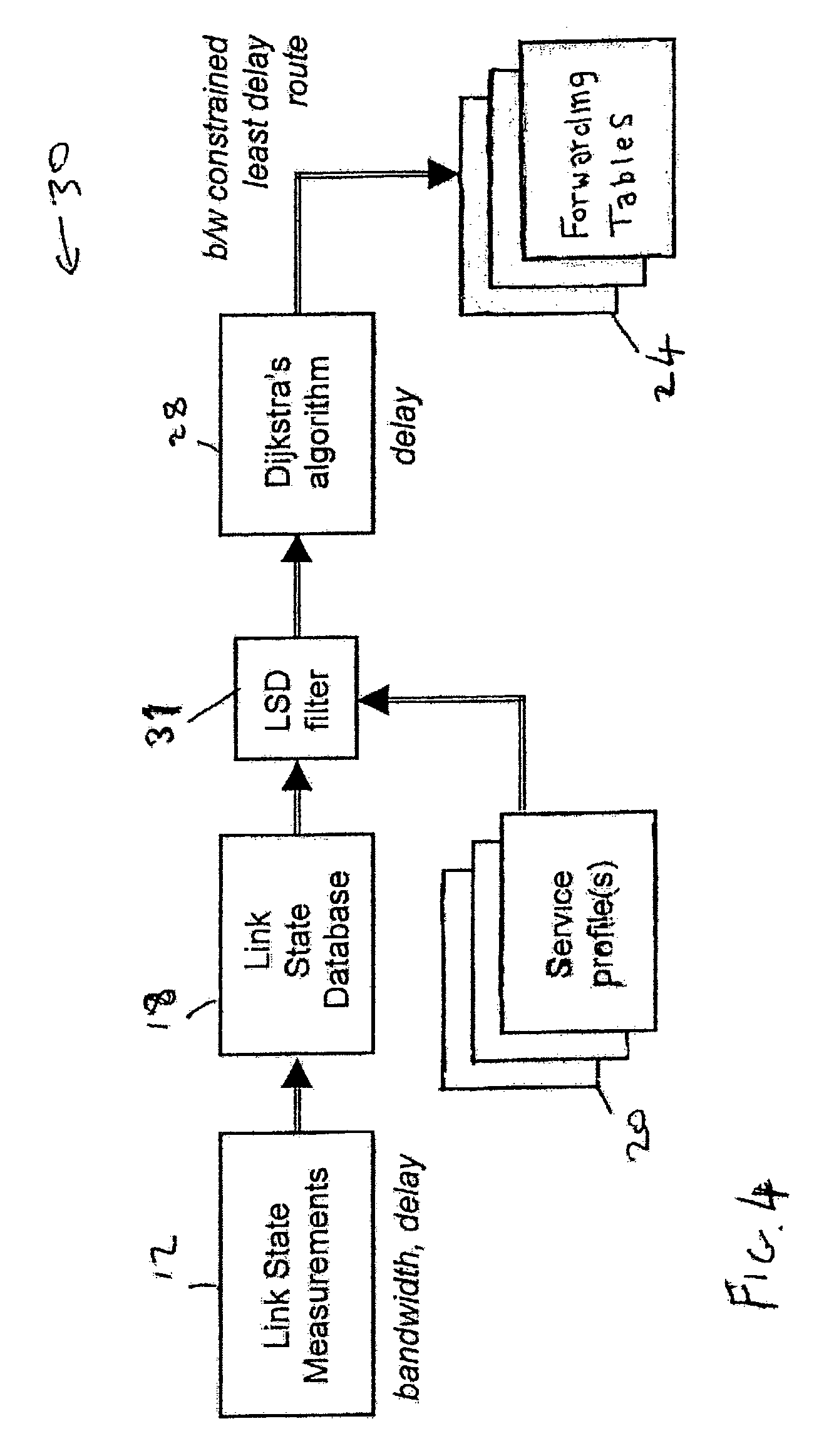Communication network route determination
- Summary
- Abstract
- Description
- Claims
- Application Information
AI Technical Summary
Benefits of technology
Problems solved by technology
Method used
Image
Examples
Embodiment Construction
[0056]Referring to FIG. 1, this shows the topology of a simple packet communications network suitable for explaining the invention, and comprises start and destination nodes X and Y and intermediate nodes A, B, C and G, which define competing routes for traffic paths XABY, XCY and XGY between the start and destination nodes, whereby each path comprises a concatenation of communication links between the source node, at least one of the plurality of intermediate nodes and the destination node. It will be apparent that the network shown may be only a small part of a larger network and the node A is a source for this part only and may itself be a destination of an earlier part. It will also be understood that these may not be the only competing routes between the source node and destination node, but are identified by way of illustration only. Each of the nodes in a network will have at least one connection to another node in the network through that node's interfaces. These interfaces ...
PUM
 Login to View More
Login to View More Abstract
Description
Claims
Application Information
 Login to View More
Login to View More - R&D
- Intellectual Property
- Life Sciences
- Materials
- Tech Scout
- Unparalleled Data Quality
- Higher Quality Content
- 60% Fewer Hallucinations
Browse by: Latest US Patents, China's latest patents, Technical Efficacy Thesaurus, Application Domain, Technology Topic, Popular Technical Reports.
© 2025 PatSnap. All rights reserved.Legal|Privacy policy|Modern Slavery Act Transparency Statement|Sitemap|About US| Contact US: help@patsnap.com



